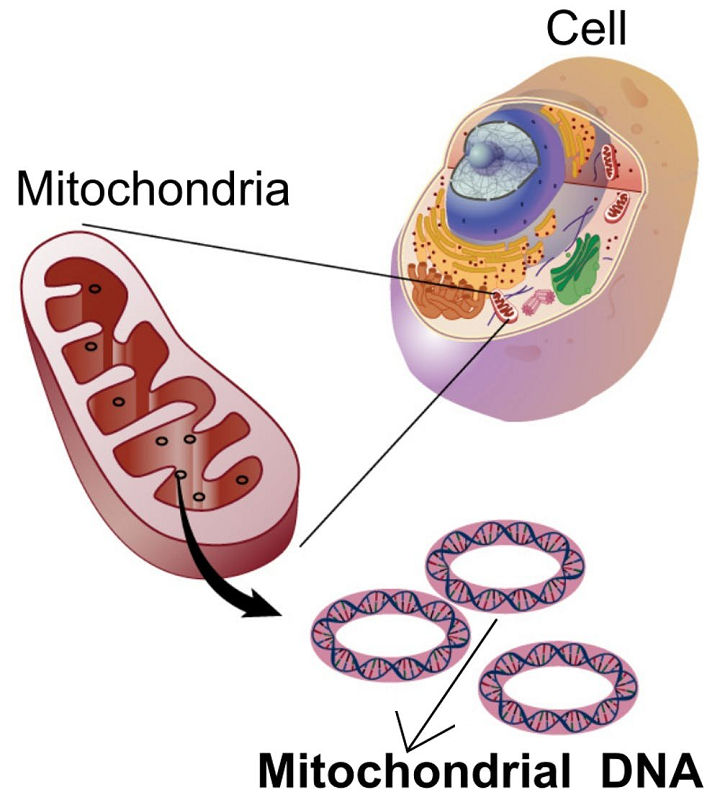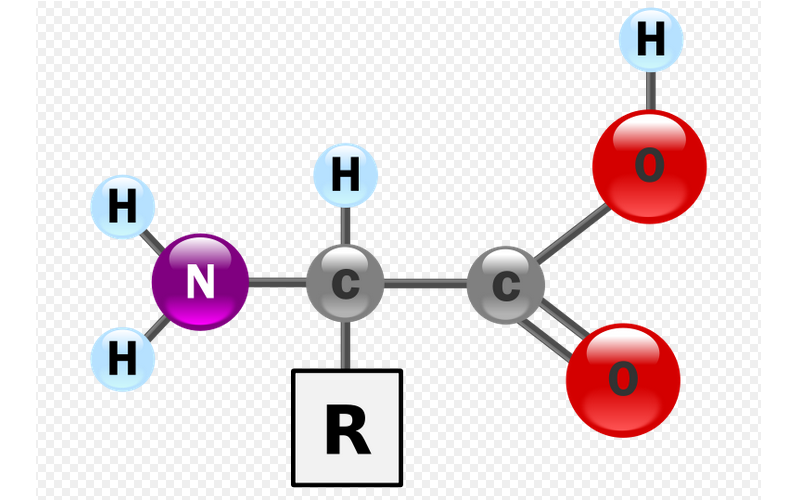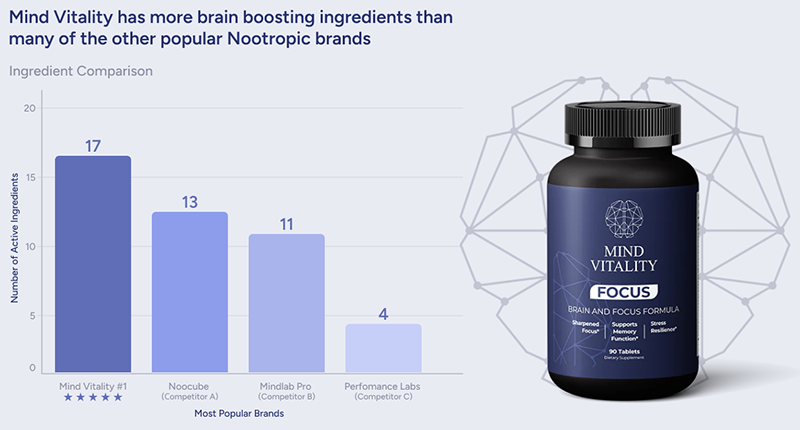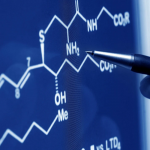Aging is the result of accumulated damage over time. Complicated interactions between biochemistry and physiology eventually lead to cellular damage that negatively affects tissues and organs, leading to disease and eventually death. Amino acids play a vital role in limiting and even reversing cellular damage, making amino acids important for those interested in the field of anti-aging.
Contents
Problems Associated With Aging
The way the human body works — its physiology — changes as the body ages. And not always in good ways. Some of these changes result in symptoms of what’s generally defined as aging. Several common physiological changes resulting in aging include the following:
- Worsening of sight and hearing
- Increase in body fat
- Loss of bone density
- Decline in muscle tone
- Reduction in cognitive function
- Stiffening of arteries
- Decline in immune system functioning
- Reduced lung capacity
- Thickening of the heart muscle
Anything a person can do to limit or reverse any of the above physiological issues could be seen as anti-aging measures.
The human body is constantly undertaking complex biochemical reactions. Unfortunately some of these processes result in damage to the body. The main biochemical reaction that is linked with aging is the formation of free radicals.
The Role of Free Radicals In Aging
Free radicals are unstable molecules that have unpaired electrons and are always looking to steal electrons from other substances — including DNA. While the process of taking electrons from other substances makes a free radical “whole” again, it damages the substances being scavenged from.
The result of this “electron stealing” is damage to mitochondria (the “power generators” of cells), DNA, and other cellular structures. This in turn leads to a number of health issues, including many of the issues listed above such as a reduction in cognitive function and a decline in immune system functioning. The final outcome is diseases such as Alzheimer’s, Parkinson’s and heart diseases.
There’s no exact, set point or indicator of what is considered to be aging. Rather, it’s the gradual, continuous free radical damage to cells that that leads to a decline in physical and mental health, and the onset of diseases, that most would consider to be what we call aging.

Antioxidants Fight Free Radicals
An antioxidant is any substance that fights free radicals by supplying them with the electrons they’re seeking. Antioxidants are good because they make free radicals become whole again without damaging other, healthy cells in the process.
There are several substances that are considered to be powerful antioxidants. One example is coenzyme Q10, or CoQ10. Another is the subject of this article — many amino acids are very powerful antioxidants and thus beneficial in the quest to slow down or reverse aging.
What Are Amino Acids?
Molecules associated with living organisms are termed organic. All organic molecules contain carbon, most also contain hydrogen, and many also contain oxygen. Nucleic acids, enzymes and proteins are all examples of organic compounds. Amino acids are also examples of organic compounds.
Amino acids combine with one another to form other organic compounds — proteins. Amino acids and proteins are considered the building blocks of life. As mentioned above, amino acids are also powerful antioxidants. So, not so technically speaking, as far as human life is concerned, amino acids are a pretty big deal.
Amino acids play key roles as both building blocks of proteins and as intermediates in metabolism. Metabolism refers to all the chemical reactions involved in maintaining the living state of cells. Intermediates are the cellular process by which nutritive material is converted into cellular components. Proteins not only catalyze (increase the rate of a chemical reaction) all of the reactions in cells, they play a role in the control of almost all cellular processes.
Amino acids are vital to the body’s metabolic processes related to repair, growth, transportation and functionality. Because of this amino acids directly affect a number of elements in the human body including digestion, organs, muscles, and brain and blood activity.
Types of Amino Acids
There are 20 different amino acids. Thousands of combinations of those 20 are used to make all of the proteins in your body. Amino acids bond together to make long chains. Those long chains of amino acids are also called proteins. The 20 amino acids fall into three categories: essential, nonessential and conditional.
Essential Amino Acids
There are nine essential amino acids. These amino acids cannot be synthesized by the body — they must come from our diet. Unlike fat, the human body can not store excess amino acids for later use. The means amino acids must be in a person’s diet every day. That’s one reason people take amino acid supplements daily — if a person falls short in ingesting amino acids through diet, there’s no store of amino acids in the body that the body can draw upon.
The nine essential amino acids are: histidine, isoleucine, leucine, lysine, methionine, phenylalanine, threonine, tryptophan and valine.
Nonessential Amino Acids
There are 11 nonessential amino acids. These amino acids can be produced by the body. Don’t let the word nonessential mislead you. Here nonessential refers to the fact that these acids are not essential in your diet because the body can produce them — it doesn’t mean they are unimportant. Knowing that the body produces these amino acids, you may wonder why some of them are popular supplements. The answer is that even though the body produces them, many people feel that supplying the body with more than the body produces provides benefits to health and anti-aging.
The 11 nonessential amino acids are: alanine, arginine, asparagine, aspartic acid, cysteine, glutamic acid, glutamine, glycine, proline, serine, and tyrosine.
Conditional Amino Acids
Amino acids that can usually be produced by the body, except under specific health-related circumstances (such as stress or old age), are called conditional amino acids. You’ll notice that the nine essential amino acids along with the 11 nonessential amino acids account for all 20 of the total number of unique amino acids. The eight conditional amino acids are actually a subset of the nonessential amino acids — some of the nonessential amino acids that the body is normally capable of producing may under some conditions may need to instead come from the diet.
The eight conditional amino acids are: arginine, cysteine, glutamine, tyrosine, glycine, ornithine, proline, and serine.
The Best Amino Acids To Fight Aging
Free radicals are the main culprit in cellular damage, so free radicals are the main culprit in the aging process. Antioxidants fight free radicals, and several amino acids act as powerful antioxidants. Of all the anti-aging techniques currently understood, the use of antioxidants is perhaps the most affordable, accessible and beneficial.
All amino acids are important to a person’s health. But of the 20 kinds of acids, a handful stand out as superior anti-aging supplements. And of these acids, sometimes their greatest power comes in taking a specific combination.
Glutathione (L-glutathione, reduced glutathione, or GSH)
Glutathione is a molecule that’s produced naturally by the liver. It isn’t an amino acid itself, but it is made up of three amino acids: cysteine, glycine and glutamine. A super-powerful antioxidant, glutathione is sometimes referred to as the mother of all antioxidants. Not only does glutathione play the free radical fighting role of all antioxidants, it also has the interesting ability to recycle used antioxidants in the body.
Glutathione is vital for proper immune function and for controlling inflammation. A well-functioning immune system is critical to good health, and glutathione is key to assisting the immune system fight infections and prevent diseases. Glutathione is present in all cells of the body, which is a pretty good hint of its importance.
As people age their glutathione levels naturally start to become depleted. Several other factors, including pollution, radiation, toxins and poor diet can also restrict the body’s ability to produce glutathione. Being a powerful antioxidant that’s subject to decreasing levels of production by the body make glutathione one of the most popular anti-aging supplements.
Carnitine (L-carnitine or Acetyl L-carnitine)
Like glutathione, carnitine is not an amino acid, but rather a combination of amino acids — in this case it’s derived from two amino acids: lysine and methionine. Carnitine improves mitochondrial function. The functioning of mitochondria — crucial for converting energy and ensuring proper cell operations — invariably declines with age. Research shows that carnitine also has the effect of increasing antioxidant activity.
There are two forms of this molecule: carnitine (L-carnitine) and Acetyl L-carnitine.
Carnitine, or L-carnitine, is popular with bodybuilders, workout enthusiasts and people interested in weight management. Carnitine’s reputation for assisting the body in converting fat into energy, and accelerating fat loss and improving muscle and bone mass make it a good choice for these groups of people.
Acetyl L-carnitine goes a bit beyond L-carnitine. Acetyl L-carnitine also helps to turn fat into energy. Additionally, it provides brain health benefits. It accomplishes this by being able to cross the blood-brain barrier (a protective mechanism that blocks toxins in the blood from entering fluid of the central nervous system) to support brain energy and function.
Which of these two forms of the supplement is best? It depends on a person’s goals. If the goal is only enhanced fat burning for bodybuilding, working out, or weight management, carnitine (L-carnitine) is the best choice. If the goal might include fat burning, but more importantly an improvement in mental clarity and focus, the more brain health oriented acetyl L-carnitine will be the best choice.
Glycine
Glycine acts as a neurotransmitter — a chemical messenger that allow neurons (brain cells) to communicate. It is also an anti-inflammatory and antioxidant. And like all amino acids, glycine acts as a protein builder. In particular, glycine is a major contributor in the production of collagen.
Collagen Is the Most Abundant Protein
While most people know of collagen as a compound that’s beneficial in skin health, it is much more than a wrinkle fighter. Collagen is a protein that is an essential component of skin, tendons, ligaments, cartilage, muscles, bones, spinal discs, corneas and even blood vessels. Collagen is the most abundant protein in the body.
Collagen makes multi-cellular flexibility possible — without that, the body could not produce the flexible tissues that enable the wide range of motion in the multi-jointed bodies of humans. And other animals — collagen is unique to the animal kingdom.
Collagen is on the front line of anti-aging because it benefits many youthful attributes, such as stronger bones, higher quality tendons, ligaments and cartilage, smoother skin and healthier corneas. All this is made possible by collagen, and collagen is made possible by the amino acid glycine.
For a healthy production of collagen the body needs a consistent, daily supply of glycine. Glycine is one of the conditional amino acids — an acid that is produced by the body and is thought to need outside supplementation only during certain conditions such as stress or illness. Recent research disputes that notion, however.
The human body produces about 3 grams of glycine each day, and a typical diet adds about 2 more grams daily. This roughly 5 grams of daily glycine, though, falls far short of the 15 grams needed daily by an adult (of about 150 pounds in weight). That’s a rather large deficit, and a good reason to consider including glycine in your daily anti-aging supplements.
Arginine (L-arginine)
Arginine is an amino acid that when digested gets converted into nitric oxide. Nitric oxide is a compound in the body that widens blood vessels (vasodilation) and stimulates the release of some hormones, including insulin and human growth hormone. Because arginine doesn’t contain nitric oxide, but rather has the ability to form it, arginine is known as a nitric oxide booster.
Nitric oxide is critical for overall health because it helps blood (and thus nutrients and oxygen) travel to all parts of the body efficiently and effectively.
Arginine Is an HGH Enhancer
Arginine is converted into nitric oxide, and nitric oxide encourages the pituitary gland to release human growth hormone, or HGH — which makes arginine an HGH enhancer. HGH has long been of importance to bodybuilders due to its role in maintaining, building, and repairing tissue, including muscles. It speeds up healing after injury and repairs muscles following exercise. This builds muscle mass, boosts metabolism and burns fat.
HGH, however, isn’t important just for bodybuilders. HGH contributes to anti-aging by slowing down, and even reversing, some of the aging processes. This hormone increases bone density, thereby reducing the advancement of diseases such as arthritis and osteoporosis.
All of this means that supplementation of arginine can bring about a reduction in the risk of heart and vascular diseases and erectile dysfunction, improve immune response, build muscle mass, reduce fat, and improve bone density.
Conclusion
The 20 different amino acids combine in various ways to make up the hundreds of different proteins that make up the building blocks of human life. Amino acids are crucial to the body’s metabolic processes of growth, repair and functionality. Because of this amino acids play an important role in digestion, muscles, organs, and brain and blood activity.
While all amino acids are important, the individual amino acids glycine and arginine, and the amino acid compounds glutathione and carnitine, play perhaps the biggest roles in anti-aging and are thus some of the most popular amino acid supplements.






